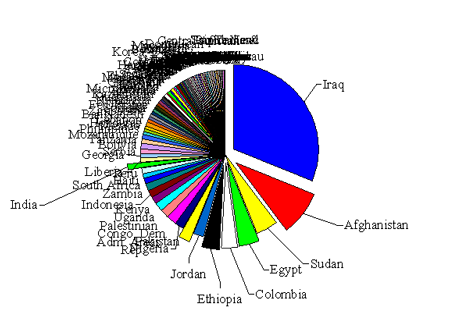And even if the government can rightfully claim the cost is minuscule in comparison to its other fiscal obligations, there is still the question of where, exactly, the money is going. In the following articles, there are sources from the budget and also interpretive graphs by analysts showing the money trails.
This one talks about Egyptian aid:
http://www.lowellsun.com/todaysheadlines/ci_23627541/faq-us-aid-egypt
This is a primary source finder of sorts:
http://www.usaid.gov/results-and-data/budget-spending/foreign-assistance-dashboard
This is a graphic representation of spent money:
http://ifamericansknew.org/stats/usaid.html
Finally, I pose the question, even if the money goes to recognized governments, who exactly processes the aid and where does it end up? Are rulers and officials building bridges or mansions with the money we give them. Are they buying clothes and building materials or weapons and items of personal interests. With the organization being as obfuscated as it is in many foreign countries, there may be few ways to find out, and perhaps it is not inappropriate to wonder, does the government itself know? If they had the means to know, would they care?


I suggest that we (US citizens) design a disclosure/intent form that has to be filled out and then signed by a high level gov official for every allocation of foreign aid. And the filled out forms have to be published. Put a bill for this before congress and demand that our congressional representatives pass the bill. Things to include in the form: $ amount, who approved the aid, purpose of the aid, what is promised in return for the aid, who directly receives the aid, and the name of the person who is assigned to be the independent watchdog who oversees that the aid is delivered as per the stated purpose.
ReplyDeleteI think the independent watchdog would be the most important part of the plan, besides the people's consent to the plan. There is still an issue of getting enough people to care about the situation as a whole, however.
ReplyDelete